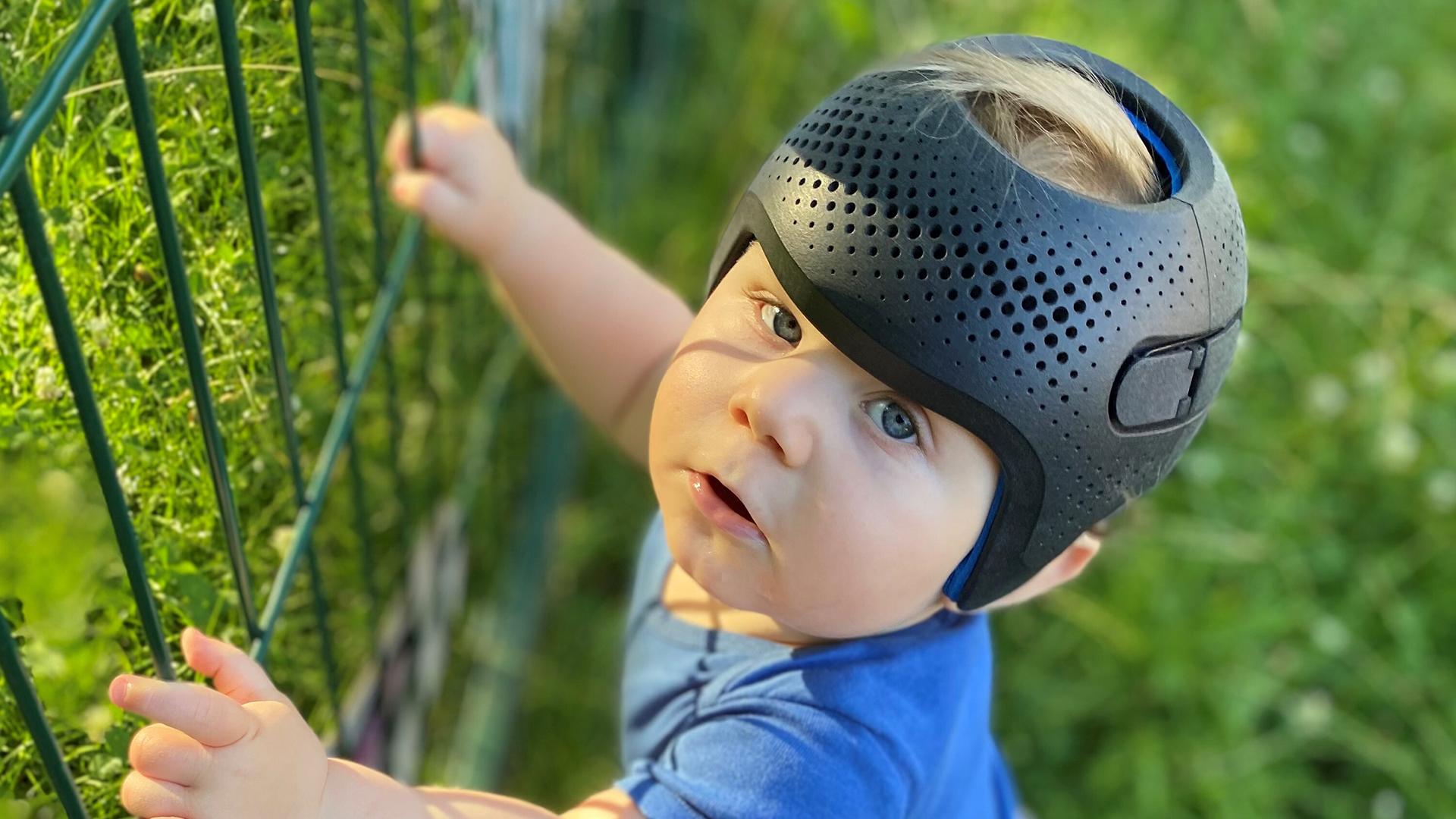
Cleaning Your Baby’s Helmet to Minimise Odours and Itching
On our Facebook page, parents often ask for advice on how to clean a plagiocephaly helmet, particularly during the summer.
While a plagiocephaly helmet is a safe form of treatment with no detrimental effect on cranial growth, it can often start to get a bit smelly. People who have to wear a helmet for work or use a cast for a broken bone find the same and it is perfectly natural. The odour is caused by sweat and natural skin oils, and so is especially common in babies with long hair and during the warmer months of the year. Some babies can also experience minor sweat rash or redness on the scalp.
Although none of these symptoms are anything to worry about, regular cleaning of your baby’s helmet can prevent smells, skin irritation and itching. Here are some top tips for keeping the helmet smelling fresh and minimise any unpleasant side effects.
How to Clean a Plagiocephaly Helmet: Top Tips from Parents
Regular Cleaning
Many parents prefer to stay one step ahead of nasty smells by giving the plagiocephaly helmet a wipe once or twice a day, using either a clean damp cloth, sponge or baby wipe. Some parents have explained that they apply diluted tea tree oil or a diluted disinfectant like Dettol or Milton sterilising fluid inside the helmet. However, we advise that you are careful when doing so as these wipes can cause a skin reaction. And because tea tree is an antiseptic, it can cause irritation.
Steve Mottram explains: “My view is that if it can kill bugs so easily, it could also irritate the skin inside the helmet.”
Because of this, we recommend using a regular baby wipe to clean the inside of the helmet, and then go over it with a clean and damp cloth. If you do choose to use a disinfectant, wipe the inner shell afterwards with a clean, damp sponge or baby wipe to prevent the solution from irritating the skin. Wipe the helmet dry with a clean towel and make sure the inside is completely dry before placing back on your baby’s head.
In the meantime, clean your baby’s hair and head using a regular baby shampoo or an extra gentle one like Burt’s Bees Baby Bee Shampoo & Wash. Massage the head gently to relieve any itching, then rinse thoroughly and dry completely using a soft towel before replacing the helmet. Talcum powder is sometimes used to help keep the head dry. Just remember to keep an eye on the scalp after application, as talc can sometimes irritate sensitive skin.
Itchy Scalp Prevention and Relief
It can seem scary when your baby starts scratching, but this is perfectly normal and generally nothing to worry about. Imagine wearing a bicycle helmet for 23 hours then taking it off. It makes you want to give your head a good scratch just thinking about it!
A certain amount of rubbing and scratching is healthy. However, you should keep your baby’s fingernails short to prevent damage to the surface of the skin, and if you are particularly concerned, you could also try mittens. Some parents gently rub the scalp themselves, relieving the itch while preventing the damage and dryness that might occur if the baby were left to his or her own devices.
When the helmet is off, apply a small amount of Sudocrem or eczema cream to any affected areas, such as the forehead, cheeks, the back of the neck and behind the ears. This should help relieve any itching and redness, but if you still have concerns you should contact the clinic.
Keeping Your Baby Cool
Finally, you should do what you can to keep your baby cool – especially in light of the hot, humid weather we’re experiencing in the UK at the moment. Dress them in light clothes – short sleeves, short pants and no socks – and bring thin extra layers out with you if you think they might be needed. If possible, keep the hair short to prevent excess sweating around the scalp area. It’s usually only the parents of boys who ask if they should cut their babies’ hair; girls’ parents tend not to and they don’t seem to have any problems. Whatever you choose to do, don’t shave the head too close as this can end up being just as uncomfortable
Avoiding Wear and Tear
Normal wear and tear of a plagiocephaly helmet tends to be down to odour. However, if you maintain the helmet through regular cleaning as explained, this wear and tear will be minimised. Additionally, if your baby is playing outside or likes to wear their food more than they eat it, clean the exterior of the helmet as and when it gets a little dirty. If you’re out and about, carrying baby wipes will allow you to clean the helmet when travelling. If you are cleaning the helmet, do not dry it with a hair dryer as the heat can damage the helmet. Dry it with a cloth or allow it to dry naturally – allowing it to dry outdoors can help to get rid of odours and keep it fresh.
We hope this guide has given you a plenty of ideas as to how to clean a plagiocephaly helmet. We would like to thank all the parents who contributed their great suggestions – your help and support is always greatly appreciated by other parents, and by us here at Technology in Motion. If there’s anything we’ve missed, please let us know on Facebook.
Alternatively, if you would like to enquire about a flat head helmet or require any further advice on helmet care and maintenance, contact our plagiocephaly specialists today.


